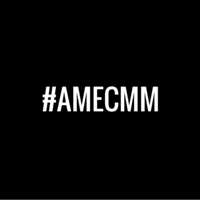 If you work in communication/communications/public relations or anything else we choose to call it (because we don’t exactly agree on terminology) and you love to quantify results (though we don’t exactly agree on how to do it) then this month is for you.
If you work in communication/communications/public relations or anything else we choose to call it (because we don’t exactly agree on terminology) and you love to quantify results (though we don’t exactly agree on how to do it) then this month is for you.
Our pals at the International Association for the Measurement and Evaluation of Communication (AMEC) officially ordained September as Measurement Month. Special events, webinars and Twitter chats on the topic abound this month. And the fete of measurement is not U.S. centric but a global education initiative.
The highlight of Measurement Month, an extended version of last year’s Measurement Week, is the launch of Barcelona Principles 2.0 an updated version of the original principles released in 2010. The beauty of the revised principles is not that they answer all of our questions about how to quantify communications, far from it. Some actually call them overly simplistic. The beauty of Barcelona Principles 2.0 is that a coalition of communication organizations collaborated on the revision. In additional to AMEC, groups who participated in the process include International Communications Consultancy Organization, Institute for Public Relations (IPR), IPR Measurement Commission, Public Relations Consultants Association (PRCA), PRSA and The Global Alliance. And it’s been getting some fine trade press to date.
But who is the actual target audience of Measurement Month? Is it meant to convert the non-measurement lot or are we preaching to the choir? Seems we don’t agree on that either. I routinely remind my public relations students at the University of Florida that everyone is not a target audience. Everyone who practices communication/communications/public relations is also not an appropriate or valid target audience. One message will not fit all groups even if we all practice communication/communications/public relations.
How are Measurement Month and the Barcelona Principles 2.0 being segmented for key audiences? Are they? I don’t believe so. Having participated in my fair share of webinars and Twitter chats this month, I see the same concepts being discussed no matter the level of discussion– specifically, the use of impressions.
According to the Dictionary of Public Relations Measurement and Research 3rd Edition impressions are “a metric that indicates the number of possible exposures of a media item to a defined set of stakeholders; the number of people who might have had the opportunity to be exposed to a story that has appeared in the media.” We also call them “opportunities to see” (OTS), which uses circulation numbers that may or may not audited. An Examination of the Validity, Reliability and Best Practice Related To Standards for Traditional Media explains impressions in more detail.
Tuesday, I attended a webinar where I was told the pros of using impressions is that big numbers look impressive and people understand them. The cons being they don’t really mean anything. That followed by a Twitter chat where chatters were asked about the role of impressions. Best answer: CEOs don’t want them. Give them more meaningful metrics. In a weird twist of fate, I was privy to a discussion where a client was told she garnered one trillion impressions though world population is only 7.2 billion.
 Perhaps next year Measurement Month activities can be broken into tracks: newbies, been around the block a time or two, heard it all before, etc. And perhaps impressions will be less prominent.
Perhaps next year Measurement Month activities can be broken into tracks: newbies, been around the block a time or two, heard it all before, etc. And perhaps impressions will be less prominent.
To do our bit to segment, the IPR Measurement Commission is taking on the task of creating an academy friendly version of the Barcelona principles and a discussion piece on the difference between principles and standards that educators can easily integrate into their curriculum.
To be fair, we’re only half way through the month so let’s see what the rest brings.
Check out Measurement Month activities here. And follow them on twitter at #amecmm. If you want to extend Measurement Month into October, join us at the Measurement Summit, October 12-13, where we will be Turning PR Measurement Into Actionable Insight.
Michelle Hinson is Director of Public Relations Measurement for CyberAlert and Chair of the IPR Measurement Commission. She tweets at @michellehinson & @IPRMeasurement. She is not impressed with impessions.




MIchelle, your point regarding impressions couldn’t be more poignant. The tension between what a client wants/demands, and what a measurement professional counsels can be quite different. Like AVE’s, impressions are possibly the most asked for metric by end users not immersed in the academics of measurement. However, as our measurement industry works to evolve the standards and methods of measurement, identifying that tension is critical. Your work, and that of the webinars and twitter chats, all helps to educate the target audiences at varying levels. Like the practitioners of measurement, the clients and users will also progress in their understanding and abilities through our help. Great post!